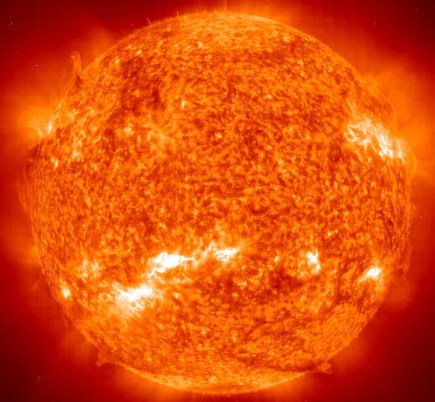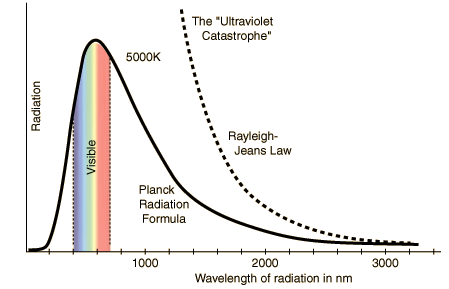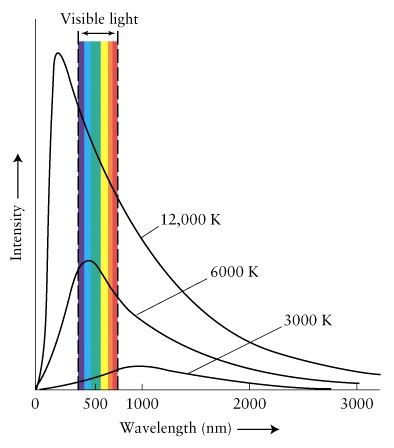- Any object with temperature T > 0 emits EM waves ( radiation ) at all wavelengths.
- If the object is a perfect absorber, it will not reflect any light. Call this a blackbody.
- A perfect absorber re-emits all light incident on it.
- The emitted light has a special spectrum called a blackbody spectrum.
- Spectrum is the intensity of the line as the function of wavelength
- Blackbody spectrum is continous and only depends on the surface temperature of the object.

Plot of Intensity of Blackbody radiation versus wavelength for T = 5,000 K:

Planck's Curve
|






